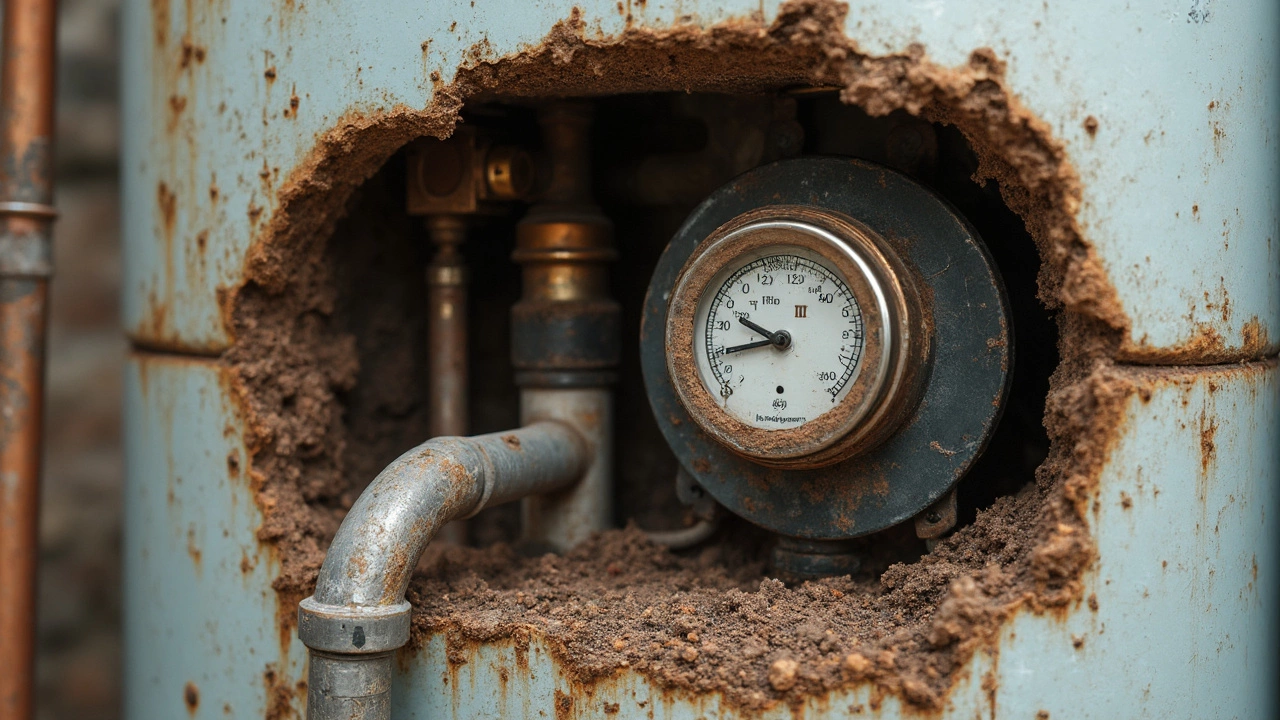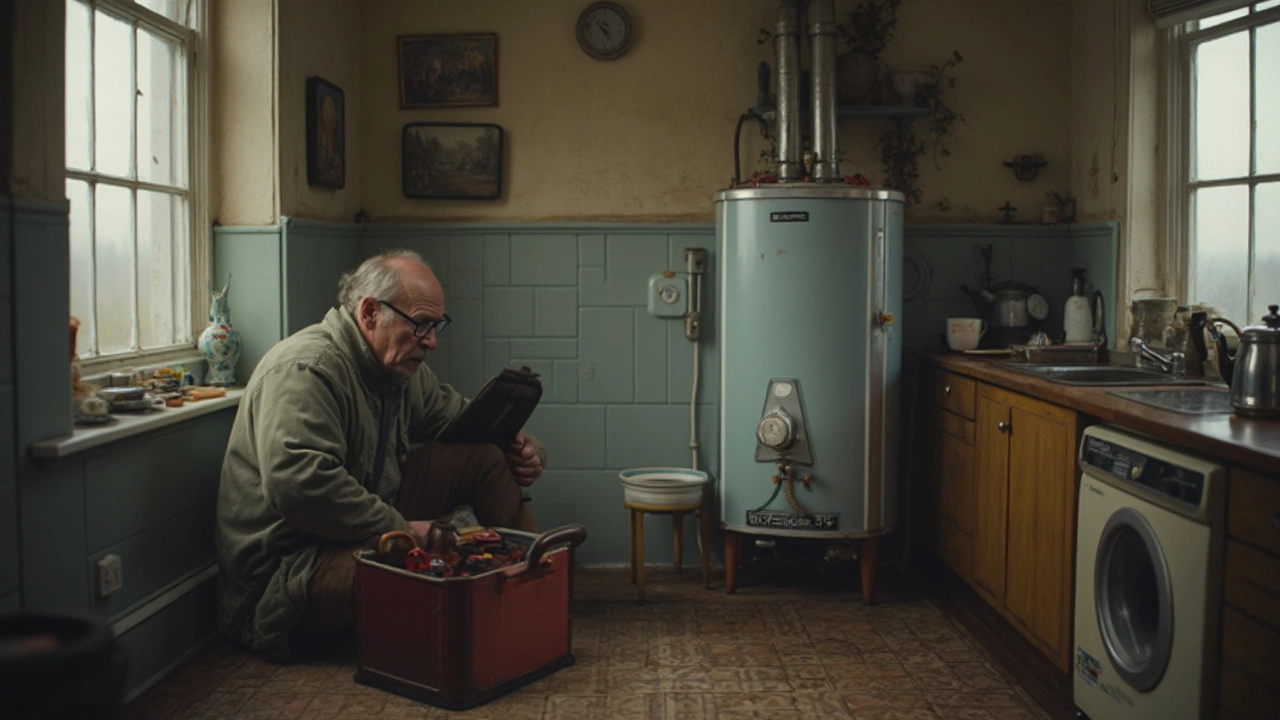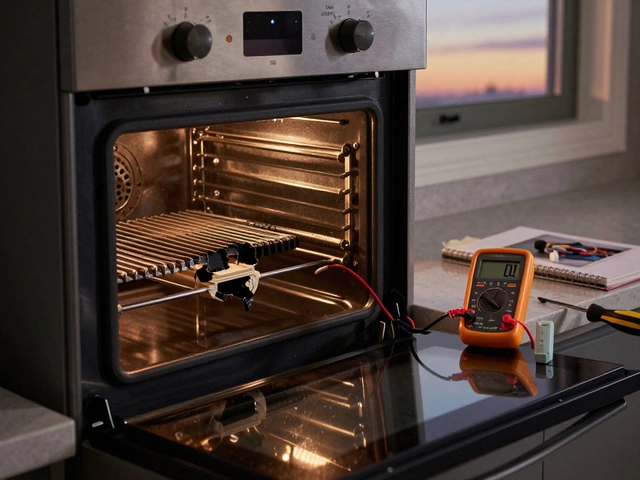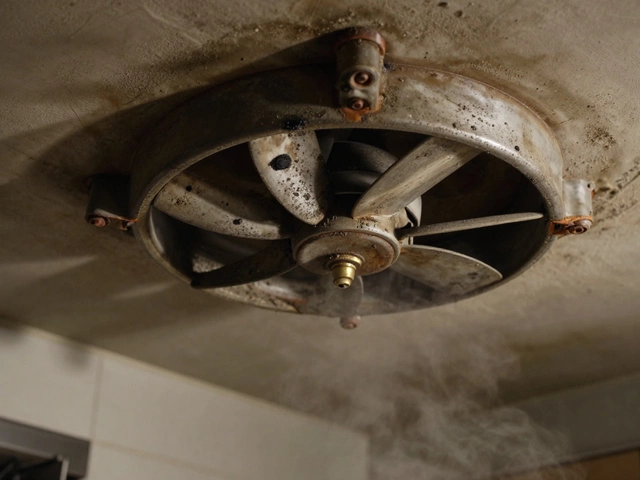Imagine you're ready for a warm shower, but the water's cold as ice. You check your hot water heater and notice that reset button's been tripped. What gives? That tiny button's not just there for decoration. It's a safety feature, designed to cut power if things get too hot. Usually, it's alerting you to a problem.
One usual suspect for tripping the reset button is a faulty thermostat. Your heater's got one job: keep your water at a constant temp. If the thermostat goes rogue, it might cause overheating, forcing that reset to pop. It's pretty much telling you, "Whoa, hot stuff—calm down!"
Then there’s sediment buildup, especially if you've got hard water. Sediment likes to cozy up at the tank's bottom, making your heater work harder. Over time, this can lead to overheating, again triggering the reset. Ever heard the term "self-cleaning" in this context? It doesn't mean an automatic scrub. It just means the tank stirs up water to minimize buildup—not super effective if it's neglected.
- Common Causes for Reset Button Tripping
- Understanding Thermostat Malfunctions
- Sediment Buildup and Its Effects
- Wiring Issues and Their Impact
- Preventive Measures to Avoid Tripping
- Signs It's Time to Call a Professional
Common Causes for Reset Button Tripping
If you've ever had to reset your water heater, you know how frustrating it can be. But hey, it's not just acting up without a reason. There are some pretty common reasons why that reset button might do its little dance.
Faulty Thermostats
Your thermostat might be on the fritz. When it decides to misbehave, it can cause the water temperature to go higher than it should. This isn't just uncomfortable—it's unsafe. Your heater's built-in protection hits the pause button, and that's when you start wondering why there's no hot water.
According to Jane Doe, a certified appliance technician, "The most frequent call I get is about water heater thermostats acting up. It's essential to address it quickly to avoid further damage."
Sediment Buildup
Got hard water? Then you've probably got sediment issues. Sediment likes to chill at the bottom of your tank. Over time, it creates a layer of insulation that can cause the tank to overheat. This not only trips the reset but also wastes energy and might just cost you more in the long run. If you're hearing weird noises from the tank, that could be sediment rumbling around.
Electrical Problems
Wiring can sometimes throw a wrench in the works. Loose wires or bad connections can heat things up too fast, again leading to the button trip. If you're down to DIY wiring, a volt meter can come in handy, but always think about calling in a pro for electrical stuff.
- Always turn off power to your heater before checking wiring.
- If you see burnt wires or smell something funny, don’t risk it.
Overloaded Circuits
If your water heater shares a circuit with other heavy-duty appliances, it might trip the reset button. It's like a power struggle you didn't sign up for. Check your circuit breaker and maybe move some stuff to separate circuits.
In the end, understanding why your reset button keeps tripping can save you from cold showers and surprising repair bills. Whether it's thermostats or a good ol' sediment problem, knowing what to look for is half the battle.
Understanding Thermostat Malfunctions
A thermostat is like the brain of your water heater. It tells the heater when to switch on and off to maintain your preferred water temperature. But what happens when it starts acting up? Things can get pretty uncomfortable.
One of the main issues with thermostats is wiring problems. If the wiring is loose or corroded, it can lead to inaccurate temperature signals. This might trick the heater into overheating the water—cue the tripping reset button. Checking the wiring regularly to ensure it's in good shape can save you from surprise cold showers.
Signs of a Faulty Thermostat
- Unexpectedly cold or scalding hot water
- Frequent tripping of the reset button
- Unusual noises from the heater, usually due to constant cycling
Just like humans, thermostats have a lifespan. On average, a thermostat might last around 10 years. After that, it's not uncommon for them to start failing. Regular maintenance checks help to catch these problems early.
DIY Checks and Fixes
- First, turn off the power to the heater. Safety first, right?
- Open the panel where the thermostat is located. You might need a screwdriver.
- Check for any visible damages like scorch marks or frayed wires.
- If everything looks fine and you're comfortable doing so, use a multimeter to check if the thermostat is working properly.
- Replace the thermostat if needed. They're not too expensive and can be found at most hardware stores.
While DIY fixes can work, consistent issues might mean it's time to call a professional. They can assess if there's a more significant underlying problem with the water heater.
Sediment Buildup and Its Effects
So, what's the big deal with sediment in your hot water heater? Well, if you've got hard water, your heater's basically a sediment magnet. We're talking about tiny bits of minerals like calcium and lime that settle at the bottom of the tank. Over time, this stuff piles up, leading to all sorts of hiccups.
Now, you might wonder how exactly this causes the reset button to trip. Think of it as your heater wearing a weighted vest. The more sediment there is, the harder the heater has to work to heat your water. It's almost like jogging with a backpack full of bricks. And when the heater works too hard, it overheats, prompting that safety feature—aka the reset button—to kick in.
How Sediment Affects Efficiency
A sediment-loaded tank isn't just inefficient—it's a real energy hog. Because of the extra energy needed to push heat through the sediment layer, you’ll likely see your energy bills take an unwelcome jump. Plus, all that effort can shorten the lifespan of the heater itself.
Detecting Sediment Buildup
How do you know if sediment's your problem? Listen for rumbling or popping noises from the tank. It's a classic sign that heated water’s bubbling up through the grit. If you're not hearing anything, don't get too comfy—sediment can accumulate silently but still cause trouble.
Preventive Steps
So what can you do to keep your water heater running smoothly? Rocking a regular maintenance schedule is a good start. Here's how:
- Flush the tank annually to clear out those pesky deposits. It's as simple as connecting a garden hose to the drain valve and letting water flow until it runs clear.
- Install a water softener if you're in an area with particularly hard water; it'll help reduce sediment formation in the long run.
By tackling sediment buildup head-on, you not only prevent that annoying reset but also extend the life of your beloved water heater.

Wiring Issues and Their Impact
Electrical problems are like uninvited guests at a party—they show up unannounced and ruin the fun. When it comes to a hot water heater, bad wiring can cause the reset button to trip, making your heater less reliable than a dollar store wall clock.
So, why's wiring such a troublemaker? Well, take loose connections. They might not set off alarms immediately, but over time, they can crank up the resistance and generate heat. This excess heat is what usually causes the reset button to, well, reset. It's your heater's way of saying, "Hey, fix this before we play with fire—literally!"
Then there are frayed or damaged wires, often resulting from age or pesky rodents. If the insulation is shot, wires could short circuit. This not only trips the reset button but also poses a genuine fire hazard. A water heater repair isn't just about keeping the showers hot; it's about keeping your home safe.
Checking Wiring Safely
Thinking about tackling the wiring yourself? Hold up. Safety first. Always turn off the power before poking around. You don’t want to be the next electrical DIY horror story. If you're unsure, calling in a professional electrician is the best bet—a small price to avoid life-threatening oopsies.
Remember, properly insulated and connected wires ensure that your water heater keeps running smoothly, and prevents any unwelcome resets. Staying on top of this might boost your heater's lifespan, and let's face it, nobody likes surprise ice baths.
Preventive Measures to Avoid Tripping
So, you want to keep that reset button in its place? Smart move! Regular maintenance is key to making sure your hot water heater runs smoothly. Let’s dive into some practical steps you can take to prevent any unwelcome dips into the icy end of the temperature pool.
Regular Cleaning and Inspections
First off, clear out sediment buildup with regular flushing. If you're dealing with hard water, watch out—sediment accumulates faster than you’d think. Aim for draining your tank at least once a year. It's a bit of a hands-on task, but it’s worth it. A clean tank means less strain on the heater and keeps that reset button from having a workout.
Don’t forget periodic checks on the thermostat settings. They should align with manufacturer’s recommendations—usually about 120 degrees Fahrenheit. Anything higher and you’re asking for trouble.
Install a Water Softener
Consider investing in a water softener if your home’s got hard water. Sure, it’s an upfront cost, but the long-term benefits like reducing sediment are worth every penny. Plus, your skin and hair will thank you too.
Check the Wiring
Wiring issues can cause significant headaches, so give them a look when you're doing your checkups. Loose connections or frayed wires aren’t just bad news; they're potential hazards. Better safe than sorry, right?
Safety Devices and Professional Help
Finally, install safety valves if they’re not already there. They act as a secondary failsafe, preventing potential overheating mishaps. And remember, when in doubt, call the pros. If you find anything sketchy like burnt wires or charred insides, it’s time to ring up a professional.
These measures won’t just keep that reset button relaxed—they’ll extend the life of your heater and save you some hard-earned cash!
Signs It's Time to Call a Professional
So, when should you throw in the towel and get a pro on the line? Knowing when to reach out can save you from headaches and unexpected cold showers. Here’s what to look for.
Reset Button Keeps Tripping
If you press that reset button only for it to pop again soon after, it might be time to call someone who knows what they're doing. Persistent tripping can point to electrical issues, faulty thermostats, or even a damaged heating element. It's best to let a trained eye handle these complexities.
Leaking Water Heater
Finding a puddle around your water heater is never a good sign. Leaks could stem from a range of issues, from corrosion to a faulty valve. These usually need professional repair to ensure nothing’s left unchecked. After all, water and electricity aren’t the best of friends.
Irregular Heating
Your water heater's acting like it's got mood swings? One minute it's lukewarm, the next it's scalding. Inconsistent temperature is often a telltale sign of a thermostat problem. While some adventures are fun, guessing how hot your shower will be next isn't.
Age and Wear
If your heater's been with you for over a decade, it's probably earning a retirement. Older units not only struggle with efficiency but can pose safety risks. If your water heater repair efforts aren't cutting it, a pro can guide you on whether it’s time for a replacement.
- Short-cycling (heater turns on and off frequently)
- Unusual noises (popping or knocking)
- Discolored or rusty water
Sometimes a quick fix isn't enough, and signs like these require expert touch. Don't hesitate to bring in the cavalry when in doubt!





